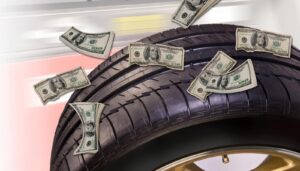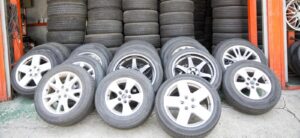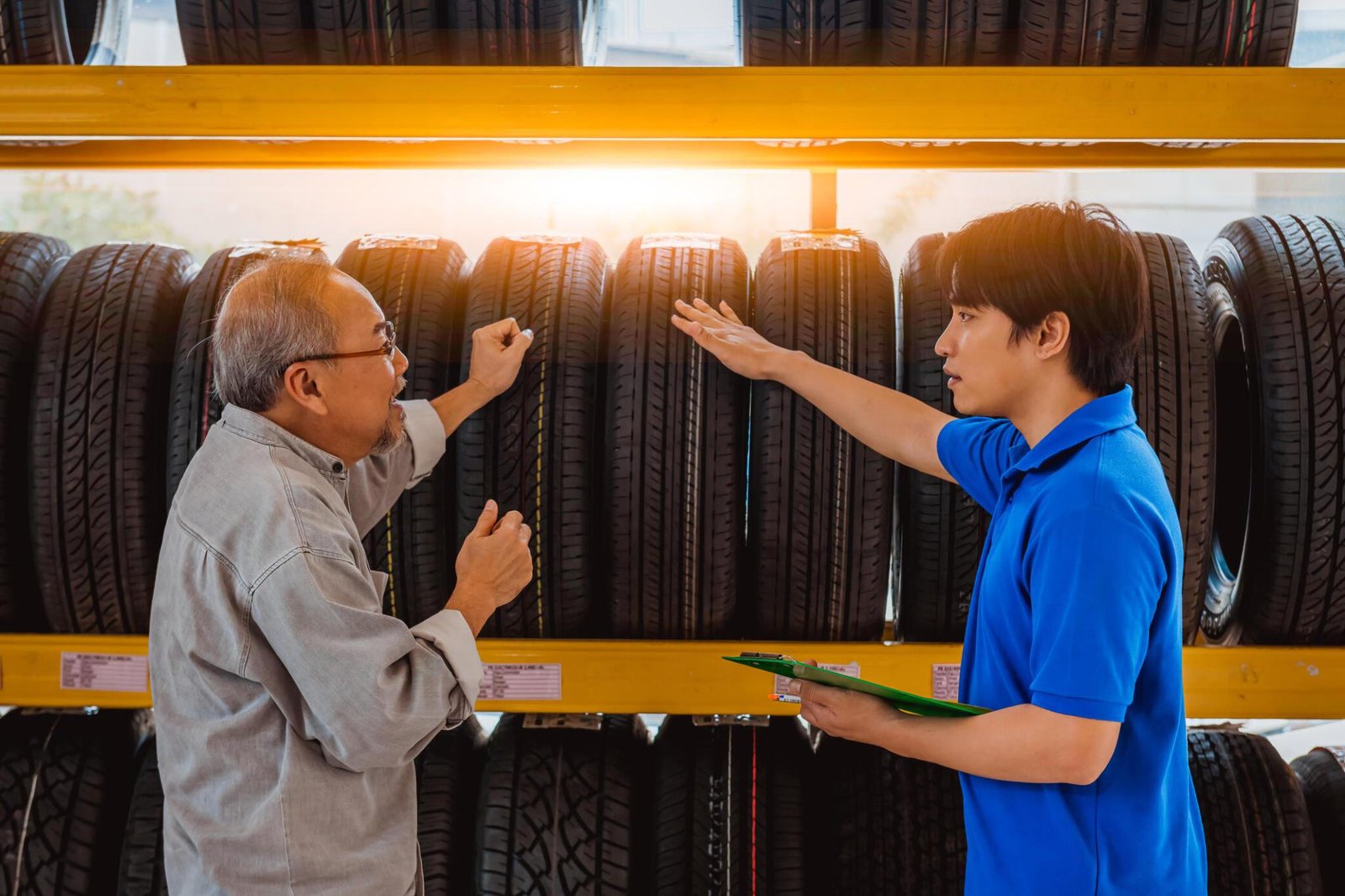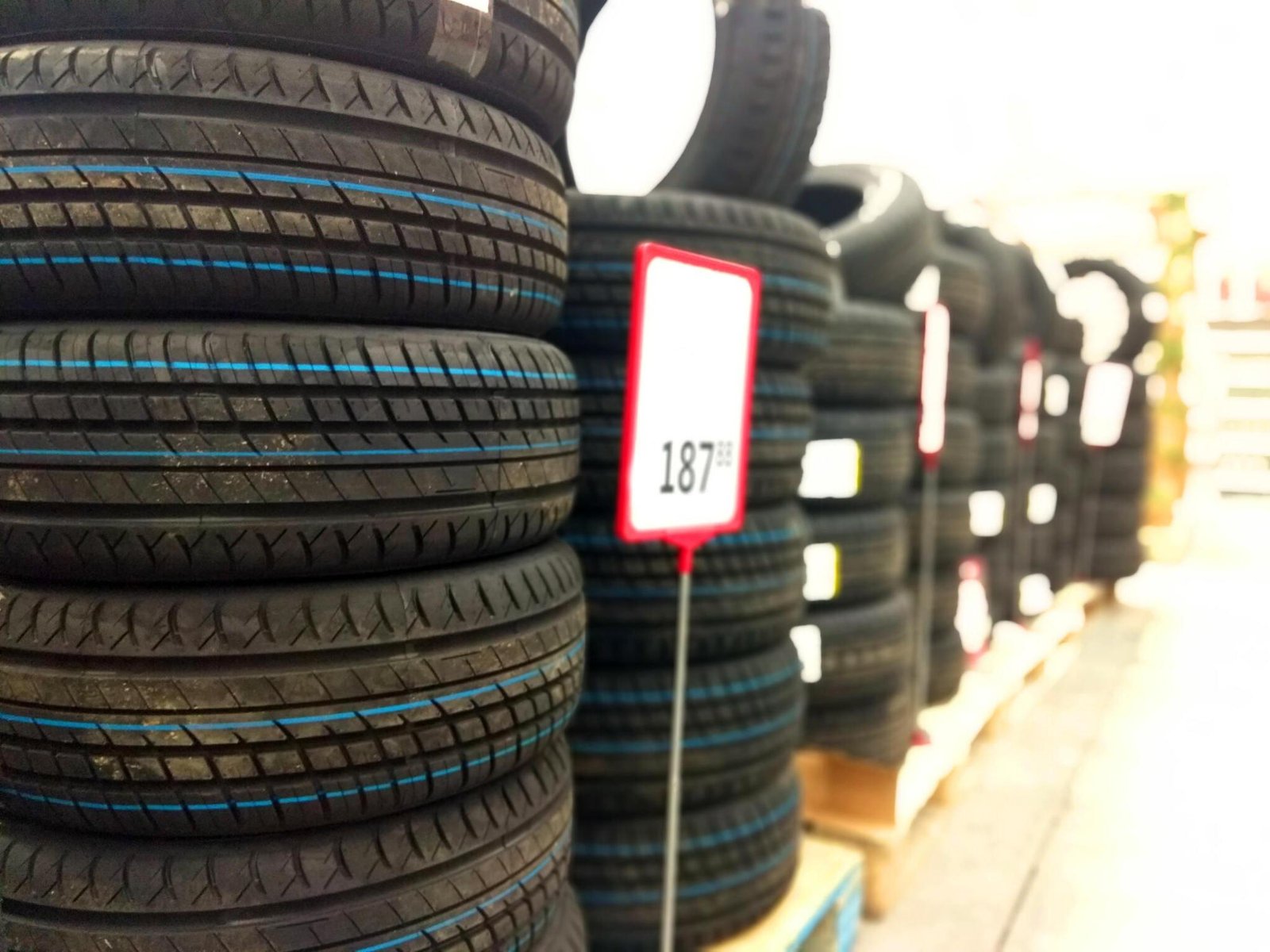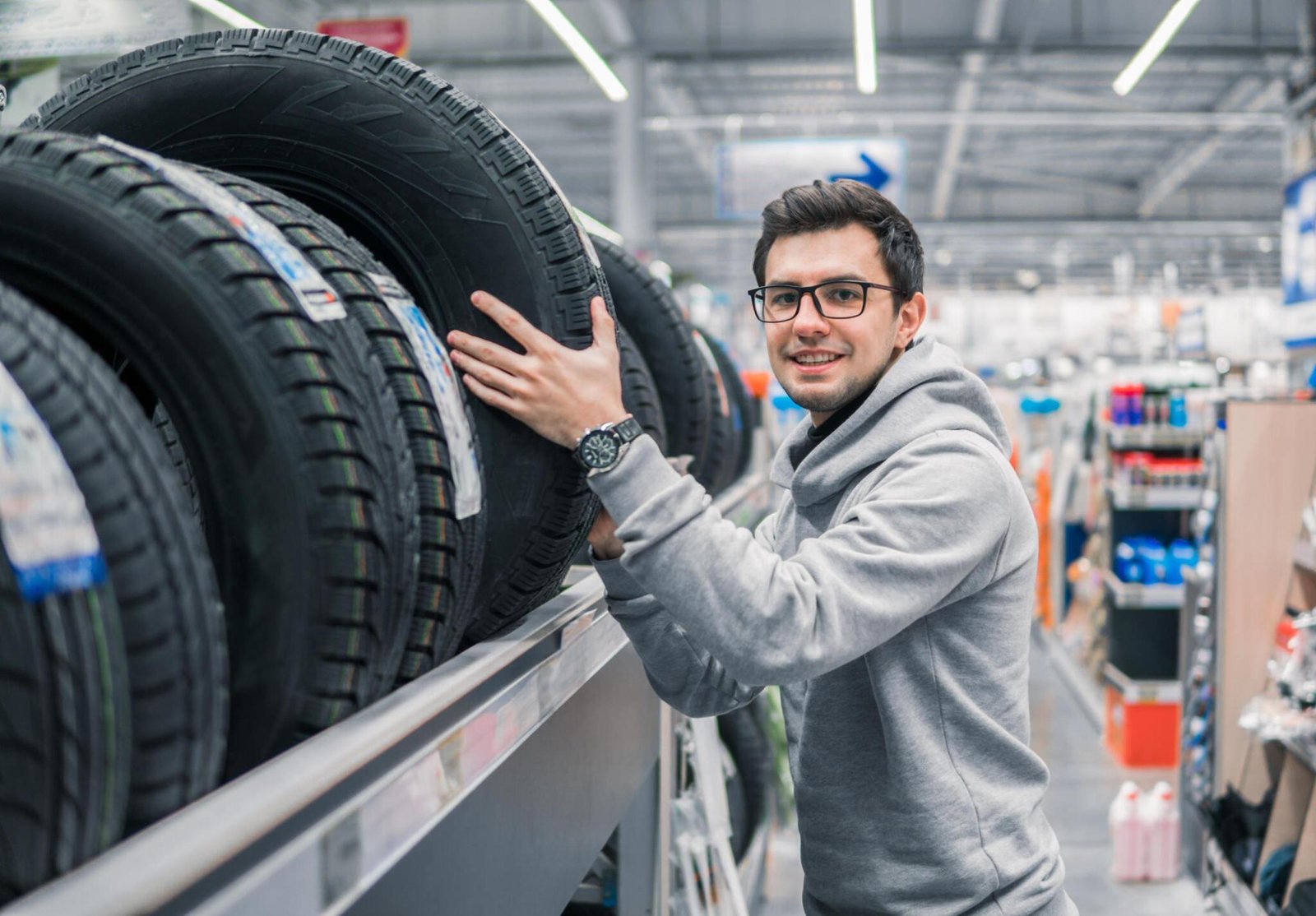Last Updated on November 17, 2023
Navigating Wet Roads: How Tires Can Prevent Hydroplaning
Few experiences on the road can be as startling as hydroplaning. That momentary loss of control when your vehicle skims atop water can escalate quickly. But did you know that your tires are pivotal in preventing hydroplaning? Let’s dive deeper into this watery menace and unveil how the right tires can be your saving grace.
Understanding Hydroplaning
Hydroplaning, at its core, is a friction issue, occurring when tires cannot dispel water quickly enough, causing them to “float” on a wet surface.
What Causes Hydroplaning?
- Speed: The faster you go, the harder it is for your tires to scatter the water beneath them.
- Water Depth: Puddles or accumulated water can increase the risk significantly.
- Tire Tread Depth: Worn-out tires with shallow treads can’t channel out water effectively.
The Role of Tires in Preventing Hydroplaning
Your tires act as the frontline defense against hydroplaning, with their design and tread depth playing a crucial role.
Importance of Tire Tread
- Water Dispersion: Tires with deeper treads can disperse more water, reducing hydroplaning risks.
- Road Grip: Quality tires maintain better road grip even on wet surfaces.
Regular Tire Maintenance
- Checking Tire Pressure: Properly inflated tires ensure optimal performance on wet roads.
- Rotating and Balancing: This extends tire life and ensures even wear, which is crucial for effective water dispersion.
Selecting the Right Tires for Wet Roads
Not all tires are created equal, especially when battling hydroplaning.
Features to Look For
- Deep Grooves: These help in effectively channeling water away.
- Quality Rubber Compound: Ensures flexibility and grip on wet roads.
- Siping: Tiny slits in the tire that further aid in water dispersion.
Tips to Drive Safely on Wet Roads
Besides having the right tires, some driving habits can minimize hydroplaning risks.
Safe Driving Practices
- Reduce Speed: Especially during heavy rainfall or when puddles are visible.
- Avoid Hard Braking: Sudden stops can lead to skidding on wet surfaces.
- Steer Clear of Puddles: Avoiding deep water accumulations is best, even with good tires.
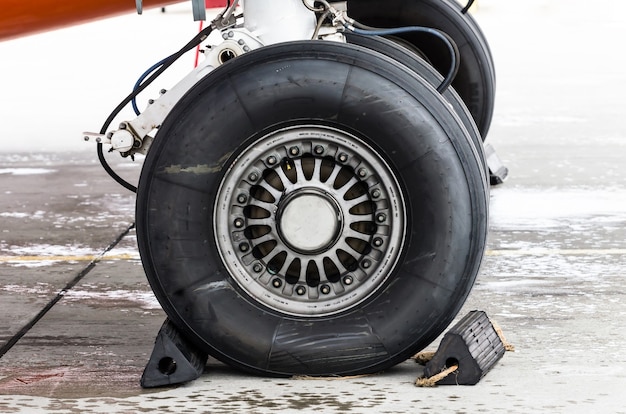
Tire Design and Hydroplaning
Tires are designed for specific needs. Some tires are built to be smooth and quiet. Others to corner best on turns. Some to carry you down snowy roads. As a result, some tires are more comprehensive, some are thinner, and some are somewhere in between.
Hydroplaning is generally less likely when your tires have a thinner contact patch, the flat footprint where your tire meets the road. Narrower tires typically perform better in water than wider tires. However, for other performance characteristics, not all tires can be thin, and tire width is not the only factor for hydroplaning. Vehicle weight is also important, as is tire tread depth and tire tread design. Tires that might otherwise be more prone to hydroplaning often have special tread patterns to reduce that risk.
High-performance tires, for instance, tend to be wider, but they are often designed to expel water to reduce the chance of hydroplaning. One example is the Sunny 3800, a high-performance tire with a uni-dimensional V-shaped tread pattern. You can see by the tread design that the V-shaped grooves are positioned to expel water from the front of the tire to the sides.
Tires – Your Guardian Against Hydroplaning
You’re driving down the highway, maybe in the rain, maybe not, and there is a patch of water on the road in front of you. You hit the water, and suddenly, your car jerks sharply because one of your tires is skidding on water. Or you’re speeding forward but floating above the road with no traction to steer your vehicle.
Your vehicle, of course, is hydroplaning. There’s a layer of water between one or more of your tires and the road, and you’ve lost traction. Hydroplaning is frightening and dangerous. Here are some things you should know:
Speed is one of the most important factors that causes hydroplaning. Driving slowly and carefully on wet roads and curves is one of the first ways to avoid this dangerous condition. Keep your car from sliding on water by braking gently and turning smoothly. Tire tread is also a factor. Replace your tires when the tread is worn down, and always check your tire pressure.
If you are in a hydroplaning situation, knowing how to handle your vehicle is critical to keeping you safe. Here are the steps you should take if you find yourself in this circumstance:
- Stay calm. Hydroplaning is frightening, but you might do all the wrong things if you panic.
- Slow down by easing up on the accelerator.
- Steer into the skid. In other words, turn your wheels toward the direction your car is going to straighten your tires and get them turning again instead of floating and skidding.
- If you have anti-lock (ABS) brakes, you can use them with steady pressure once you have steered into the skid.
- Avoid your brakes if you don’t have ABS. If your car does not have an ABS, and you cannot brake, do so by gently pumping your brake peddle.
Conclusion
Hydroplaning is undeniably daunting, but you can navigate wet roads confidently with the right tires and some cautious driving habits. Remember, your safety hinges on the four patches of rubber connecting your car to the road. So, prioritize tire quality and maintenance.
Ready to equip your vehicle with the best anti-hydroplaning tires?
Explore our extensive range and make a purchase that promises safety and control. Drive confidently, even on the wettest days, with tires from Tires Easy.
Eager for more tire tips and tricks? Tire Easy has you covered. Please explore our website for a treasure trove of articles.
FAQs
What can you do to prevent hydroplaning?
To prevent hydroplaning, reduce speed during wet conditions, avoid driving through deep puddles, ensure tires are properly inflated, maintain good tire tread depth, avoid sudden braking, and steer clear of water accumulations on the road.
Can tires prevent hydroplaning?
Yes, tires play a significant role in preventing hydroplaning. Tires with deeper treads, quality rubber compounds, and proper inflation can channel water out and maintain grip on wet surfaces.
Which tires cause hydroplaning?
Tires that are worn out, have shallow treads, or are improperly inflated are more prone to hydroplaning as they struggle to disperse water effectively on wet surfaces.
What is hydroplaning, and how can drivers prevent its occurrence?
Hydroplaning occurs when a vehicle’s tires lose contact with the road surface due to a layer of water, causing the car to “float” or skid. Drivers can prevent it by maintaining their tires, reducing speed in wet conditions, and practicing cautious driving habits like avoiding deep water on roads.





